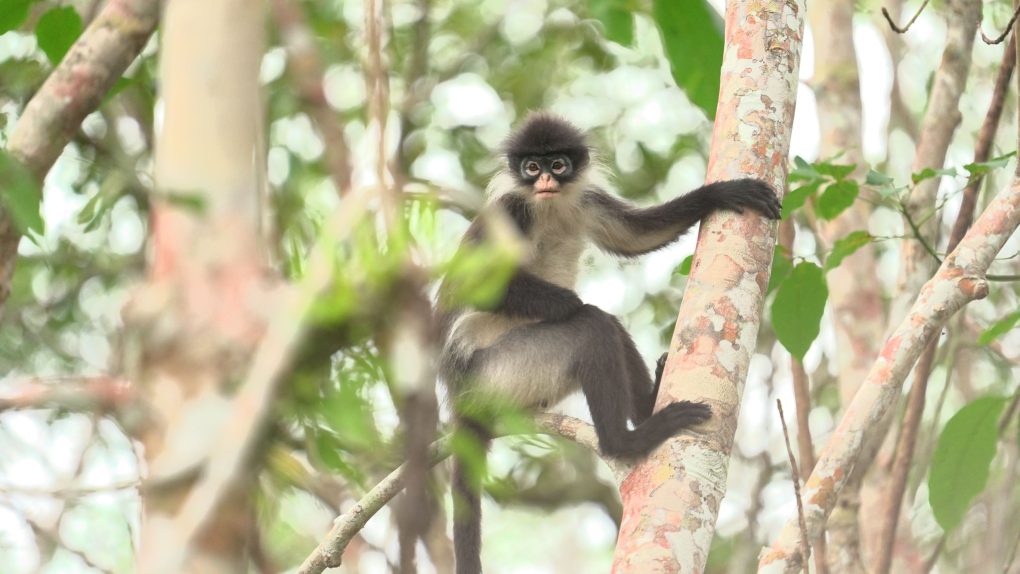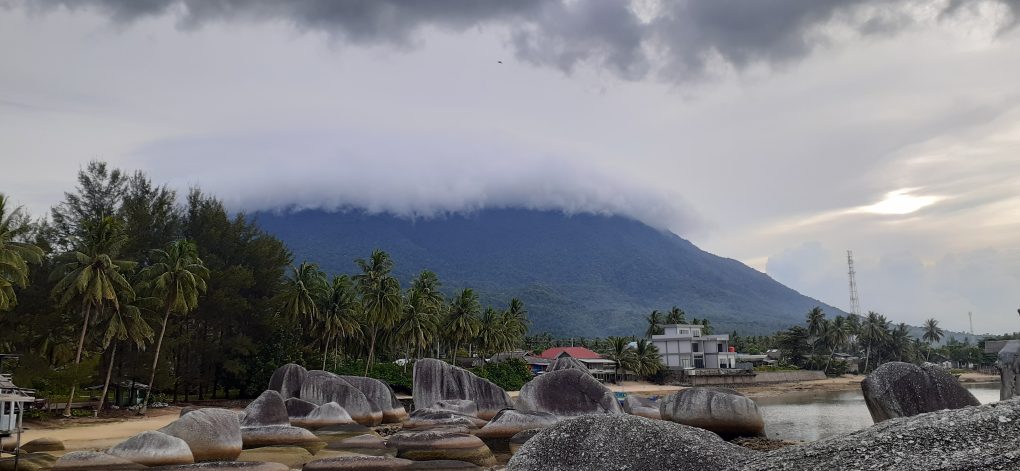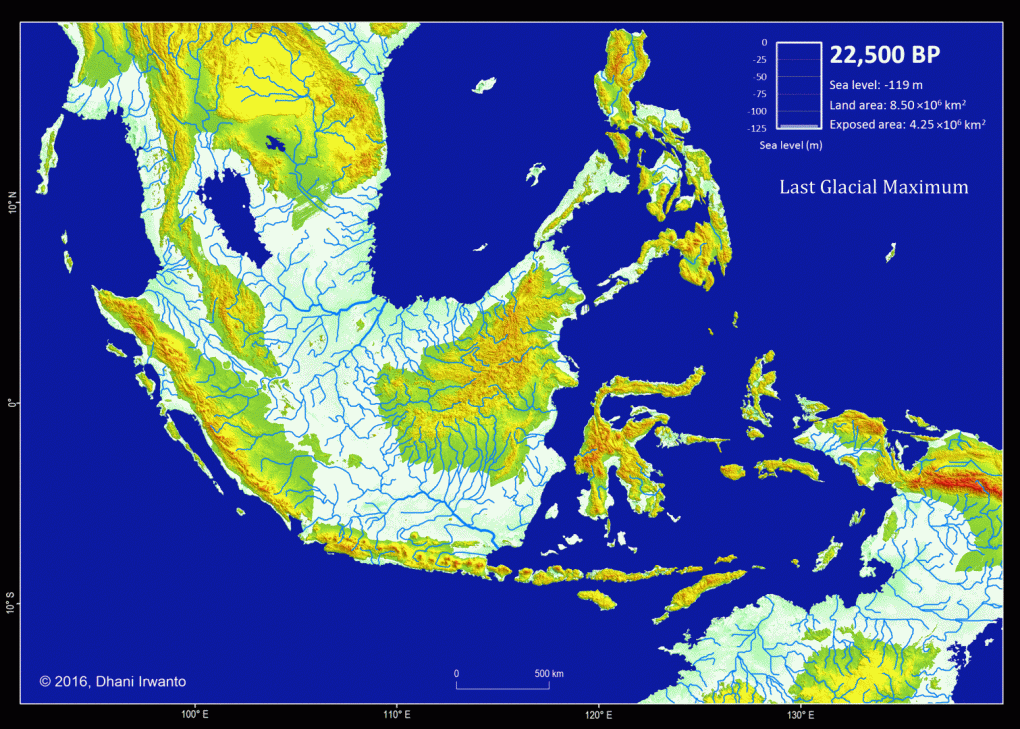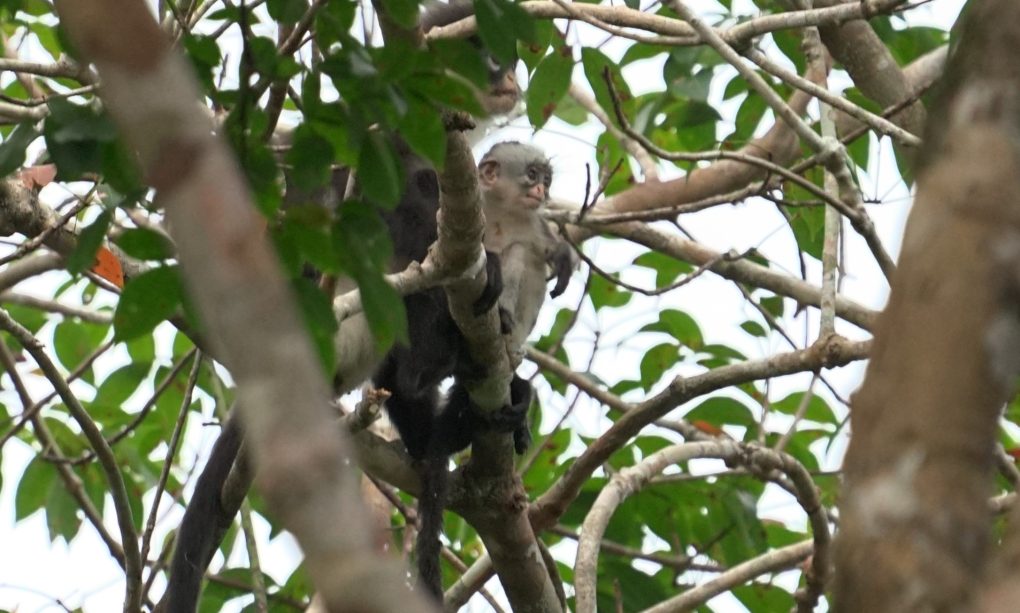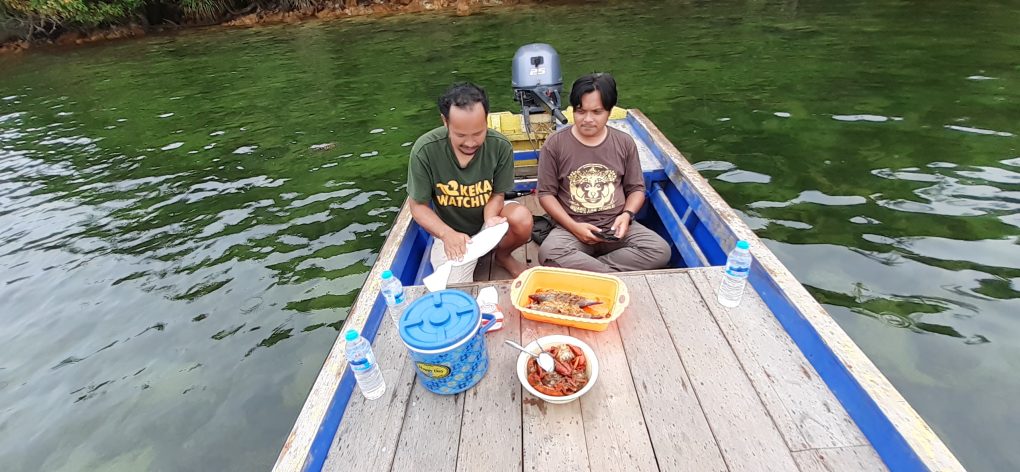A primate watching expedition in September 2022 took us to the northern tip of the Indonesian archipelago, to a place called the Natuna Islands. SwaraOwa and Natuna go back all the way to November 2020, when we made our first trip there. This time, we set off for Natuna via Pontianak because there happened to be activities in Ketapang, West Kalimantan, from which we travelled on to Batam. The flight from Batam to Natuna lasted around 1 h 45 min. Finally, at 4.20pm on 8 September 2022 I set foot on Natuna and breathed the fresh air of the islands that I had long dreamt of visiting for the Natuna Island leaf monkey (Presbytis natunae), named Kekah locally. We headed for Mekar Jaya Village, in Bunguran Barat District. Bang Ahdiani, a local hero who played a crucial role in advocating the conservation of native Natuna primates, was expecting us. Bang Ahdiani first took us to visit one of the natural wonders of Natuna, an extraordinarily large outcrop of granite set against a spectacular coastal backdrop. It is a thing of such beauty that words cannot do it justice.
This granite outcrop is a throwback to the Jurassic period about 200 million years ago, when, according to geological research, the Natuna Islands were formed by the collision between the Indian Ocean crust and the Sunda shelf. The Natuna Islands are therefore a valuable repository of geological information and biodiversity that must be preserved for future generations.
The Kekah Natuna can probably trace its origins back to a period approximately 6,000 to 20,000 years ago, when most of Southeast Asia was still a contiguous landmass called Sundaland. Natuna is located near the ancient Molengraaff river system that flowed through part of Sundaland. This river system is named after the geologist and natural explorer Gustaaf Frederik Molengraaff from the Netherlands who studied Sundaland’s ancient rivers in the 1800s. The area was one of the planet’s foremost biodiversity hotspots at that time, but it was significantly affected by changes in sea levels and the global climate.
This graphic shows how most of Sundaland became submerged over time:
source : https://atlantisjavasea.files.wordpress.com/2015/09/sundaland-in-the-last-glacial-period.gif
It is thought that after the dinosaurs became extinct, mammals, including types of leaf-eating monkeys (of which the Kekah Natuna is one), spread from the Asian mainland onto the vast plains of Sundaland that stretched as far as Java, Kalimantan and Sumatra. Over a period of two million years, as sea levels rose and fell and the vegetation in the region underwent dramatic changes, primates started diversifying into new species to exploit the new opportunities that emerged. This applies especially to the Presbytis leaf-eating monkeys or surili’s of Sundaland, now largely underwater and separated into Java, Sumatra and Kalimantan. Today, various species of Presbytis monkey are found on Natuna, Java, Sumatra, Kalimantan and surrounding small islands such as Bintan, Singapore, and parts of peninsular Malaysia. The various species are distinguishable by differences in morphology, from their hair colour, body size, skull shape voice, and even genetically.
Every new primate seen alive in its natural habitat counts as a ‘lifer’ for primate observers and is proudly added to their ‘life lists’. That day, I was privileged enough to see the Kekah Natuna for the first time, a lifer for me!
We encountered our first Kekah– a troop of around three individuals – in a rubber plantation mixed with natural timber close to a mangrove swamp. At a distance of approximately 65 meters, we could clearly make out their black crowns, the black on their backs extending down their arms and feet, and the white on the chest and flanks covering their upper abdomen and lower thighs. There is also white around the eyes, nose and mouth, making them look like they are wearing glasses and a mask.
We had got there by skirting the edge of the village along a paved road, which made looking for the surili much easier. A few metres later we saw the same troop again. Incidentally, the surili in Mekar Jaya ppeared relatively habituated to humans.
We continued to walk through the abandoned rubber plantation around Mekar Jaya, getting a feel for the lay of the land and the habitats there. All the way, the surili seemed to get easier to observe up close. The seeds of these rubber trees turned out to be one of their favourite foods.
At the primate congress in Ecuador last year, the Natuna Island leaf monkey was recognised as one of the 25 most endangered primates in the world. Information on the species is scarce, with only three studies having been conducted since the first specimen was found 86 years ago (read the full report here). A recent publication on the Natuna Island surili in Mekar Jaya estimates that in the three types of habitat found around the hamlet totalling 1,236.17 ha in area, there were around 928.2 individuals. This research can be read in full here: https://jurnal.untan.ac.id/index.php/jmfkh/article/view/52427
We also went on night excursions at Mekar Jaya, where we were very pleased to see that the Malayan colugo (Galeopterus variegatus) could be found quite easily. Sadly, we had no luck finding our target, the slow loris, on our two nights there. What really impressed us about Mekar Jaya was their marine aquaculture, and Bang Ahdiani took us on a boat to see the small islands around Mekar Jaya. We found out that Humphead wrasse breeding on Sedanau Island accounts for a significant portion of Natuna’s exports and wrapped up the boat trip with a sumptuous black pepper crab meal.
What little research on the Natuna Island surili has already delivered some results. Tours are now organised to look for the Kekah which can promote awareness of the importance of biodiversity in order to resist encroachment on native habitats by humans and their infrastructure. Such tours could also boost the local economy, as they will bring about a demand for lodging and experienced guides. The Kekah Natuna is an obscure species, so bringing it to the attention of an audience from other parts of Indonesia and the world will certainly inspire a greater sense of appreciation for it among locals. Simple as this idea may be, it could ultimately encourage locals to take greater ownership of their natural enviroment and guarantee a future for this threatened primate.
Kekah watching will likewise encourage the participation of the general public in citizen science. The data gathered by ordinary people trying to spot different primate species and tick them off on their life lists can be used to inform how the population and habitat of the Natuna Island surili are managed. This could in turn help locals gain more in the way of ecological, economic, social and cultural benefits from conserving nature. For example, the Kekah Natuna could both become an emblem of local pride, as well as add to the array of special interest tourist attractions that Natuna has to offer. Everyone has a part to play in ensuring that the surili is not trapped, not kept in captivity and not disturbed, and that its habitat is allowed to thrive.
In sum, observing primates in the wild is a fun activity that brings you closer to nature and will get you talking to local residents who may have lots of interesting cultural and personal experiences to share. What’s more, by sharing your sightings with others, you can broaden our scientific understanding of these unique creatures and allow them to be better protected.
Reference
Harrison, T., Krigbaum, J. and Manser, J., 2006. Primate biogeography and ecology on the Sunda Shelf islands: a paleontological and zooarchaeological perspective. In Primate biogeography (pp. 331-372). Springer, Boston, MA
Written by Arif Setiawan, Translated by T.T Chan
